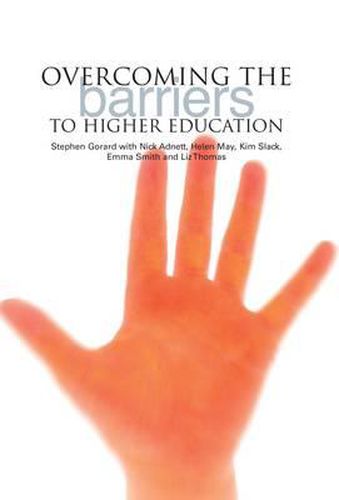Readings Newsletter
Become a Readings Member to make your shopping experience even easier.
Sign in or sign up for free!
You’re not far away from qualifying for FREE standard shipping within Australia
You’ve qualified for FREE standard shipping within Australia
The cart is loading…






There are serious inequalities in participation in post-compulsory education and training related to socio-economic status, gender, ethnicity and other characteristics. Such inequalities are reproduced and exacerbated in higher education. This book is based on a review of research evidence that explores whether these social and familial patterns can be interrupted via educational and other interventions.
The answer lies in taking a radically new lifelong approach, considering changes over time and examining earlier life factors that influence participation - such as family, peer-group and initial education. All these factors help to build the learning trajectory of individuals that leads them to consider HE as a possibility. The impressive results of this review of evidence make this book essential reading for practitioners and policy-makers concerned with widening participation, and for academics.
$9.00 standard shipping within Australia
FREE standard shipping within Australia for orders over $100.00
Express & International shipping calculated at checkout
There are serious inequalities in participation in post-compulsory education and training related to socio-economic status, gender, ethnicity and other characteristics. Such inequalities are reproduced and exacerbated in higher education. This book is based on a review of research evidence that explores whether these social and familial patterns can be interrupted via educational and other interventions.
The answer lies in taking a radically new lifelong approach, considering changes over time and examining earlier life factors that influence participation - such as family, peer-group and initial education. All these factors help to build the learning trajectory of individuals that leads them to consider HE as a possibility. The impressive results of this review of evidence make this book essential reading for practitioners and policy-makers concerned with widening participation, and for academics.